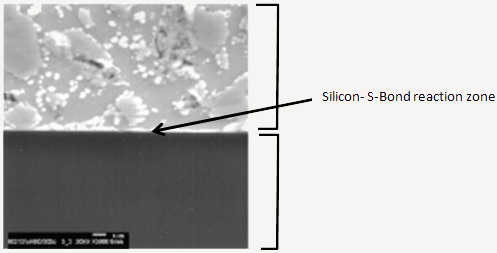The direct solder joining of silicon is difficult posing solder wetting and adherence challenges for many applications including electronic “die” packages, sensor chips and solar panels. The direct solder bonding to silicon (Si) has been limited by the wetting resistance of angstrom thick nascent silicon dioxide (SiO2) layers that naturally forms on silicon. To combat these solder bonding challenges, metal plating (vapor deposition of Ti and Ni) has been used. To address this challenge, S-Bond Technologies has developed and has recently been awarded a patent for its S-Bond 220M alloy which is a Sn-Ag-Ti-Ce-Ga + Mg alloy that has been optimized for direct Si solder bonding without flux nor plating. The new alloy bonds well to silicon, silica, and glass silicates based on a solder formulation that adds magnesium (Mg) in low enough levels that does not change the solder melt behavior but enhances the “active” nature of S-Bond alloys to interact with oxides of silicon and many other metals even more effectively than other active solders. These Mg modified active solders wet and adhere very well to silicon based on mechanical activation used in other active solders.
In wetting tests the mechanism of Si adherence for S-Bond 220M was observed to be on the micro-scale, and can be seen as a metallurgical interaction on the Si surface with the Ti modified Sn-Ag phases. See the image below.

In addition to direct solder bonding to Si, S-Bond 220M has been found to enhance the direct solder bonding of a wide range of metals to many ceramics, glasses and refractory metals. Due to its versatility and bonding to Si, silicates, ceramics and metals, S-Bond 220M is finding wide acceptance in solar panel manufacturing and sputter target bonding . Contact Us to discuss your needs to direct solder to silicon, silicates and other glass-ceramic-metals.

2 Responses
Hi,
I would like to know more about S bond 220M. Thanks.
I would like to learn more about S bond 220M.
thanks